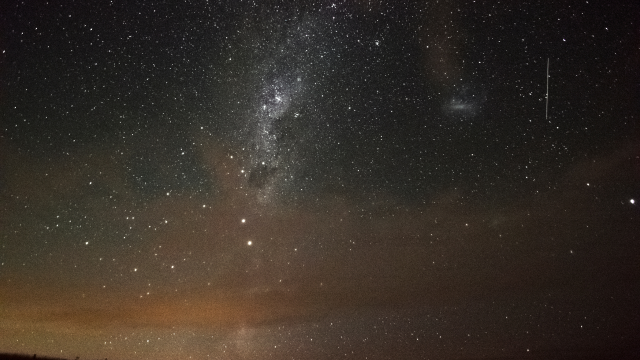Skywatchers are in for a treat this weekend with two more meteor showers set to be visible from Australia.
Brought to our attention by The Guardian, the Piscis Austrinids, the Southern Delta Aquariids and the Alpha Capricornids will all be visible this week.
While the Piscis Austrinids put on a show on Thursday night, the still-to-come Alpha Capricornids is expected to have four meteors visible per hour, and the Southern Delta Aquariids is expected to have a whopping 20 meteors visible per hour at its peak.
Meteors are made up of cosmic rocks, often sourced from comets, which are much larger cosmic rocks. Comets orbit around the sun and every now and again, pieces fly off into Earth’s direction. It’s a pretty cool natural phenomenon.
Previously, some meteor showers have produced between 50 and 100 meteors per hour at their peaks, but this is not the case for all of them.
Back to the meteor showers visible this week in particular, the Southern Delta Aquariids come from the comet 96P/Macholz. The Alpha Capricornids comes from the 169P/NEAT comet. The origin of the Piscis Austrinids comet, interestingly, hasn’t been identified.
Where and when can I see these upcoming meteor showers?
The Piscis Austrinidis was visible on July 28 between 8pm and 11pm. All skywatchers had to do was turn their gaze to the south-east and ;ook 45 degrees up.
The second, the Southern Delta Aquariids (the big one) will be best visible on July 30 at about 11pm, to the east-northeast. Look 45 degrees up.
Finally, the Alpha Capricornids meteor shower should be bright and have some fireballs, and will be best visible from about July 30 at about 11pm, visible to the north-northeast. Yes, the same date and time as the Southern Delta Aquariids, but in a slightly different direction. Look 65 degrees up.
Additionally, the Perseid meteor shower is expected to peak on August 13 at about 5am, with an expected 100 meteors visible per hour.
The “peak period” for these meteor showers lasts about 48 hours, so while you may be able to spot them at other times, the above times are considered the best.
Check out more space rock stories from our mates at Gizmodo.

Comments